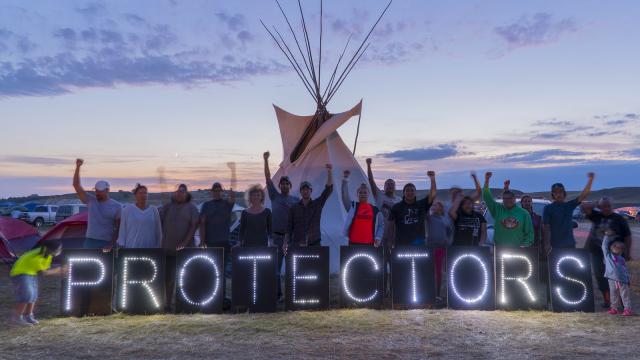
“I think the biggest misconception is that it was a protest and that the Water Protectors were protesters,” Josue Rivas, an indigenous photographer and journalist, told BuzzFeed News of the demonstrations and encampments at Standing Rock in 2016.
The #NoDAPL movement at Standing Rock was forced to disband on Feb. 26, 2017, having failed to stop construction of a controversial oil pipeline that threatened the waters of the Missouri, Mississippi, and Big Sioux rivers and crossed through land sacred to the Lakota people. Despite this failure, the movement around it ignited changes that are still in effect and awareness that is creating conversations throughout the country.
Thousands of people gathered near Cannon Ball, North Dakota, over the course of nine months. The images of local government forces — who were protected by dogs, tanks, and shields while beating Native Americans — quickly became iconic as an intense debate over environmental water rights raged. What started as a local issue in a remote place became a broader fight between ideologies, attracting support from all over the globe.
“What happened at Standing Rock was something that we probably won't see again anytime soon. People dropped their life and showed up at the camps because they were called to stand up for the water, and in the process they were part of something bigger than themselves,” said Rivas.
“Standing Rock lit a fire in so many of us. Maybe it was because we finally got the opportunity to tangibly feel an entirely indigenous reality. Camp did that for us. And when we left, we were able to take that feeling back into our communities and plant seeds of hope for a better future,” said Matika Wilbur, a Swinomish and Tulalip photographer.
Sacred Stone Camp near Cannon Ball, North Dakota, on Sept. 10, 2016.

For many non–Native Americans, this was a brief moment of reckoning with the painful history of appropriation, land-use rights, and indigenous customs. Celebrities took up the cause, mentioning the movement on air during awards ceremonies and posting the rallying cry of #NoDAPL on social media platforms such as Instagram.
As the movement drew attention, it struggled publicly with complicated questions about the narrative around what they were protesting versus how the media was covering it, indigenous involvement, microaggressions, reparations, and the lasting effects of colonialism and capitalism.
“When the Standing Rock story was told through an indigenous lens you got a different perspective because it was personal — it wasn't meant to be just news but rather the manifestation of our ancestors’ wildest dreams,” Rivas said.
“I arrived at camp and walked from fireplace to fireplace,” Wilbur said. “California natives offered bird songs with clapsticks and [danced with jubilance]. Haudenosaunees sang with water drums in their ancient language, Nakotas sang heart-throbbing Sundance songs, and Shinnecocks offered round dance songs. There was a Northwest coastal jam, a comedy show, and a hip-hop show. There were even people playing reggae. It was a night that I’ll never forget. I heard an auntie say that Standing Rock has now become a place where she feels the freedom to be an Indian. I felt it too. I felt proud to be an Indian that night.”
For Native Americans, the protest was the first time in modern history that so many tribes had gathered together for a common cause, allowing ceremonies and traditions to be shared.
“Standing Rock gave us a sense of freedom my generation had not experienced,” Rivas said. “There was a lot of healing from ancestral trauma and reconciliation at the camps. However, we know this current system operates in a way that wants to enslave our spirit. I think after Standing Rock people knew that another world is possible, a world where we retain our connection to the Earth and fight for the right to be human.”
After Standing Rock, activists went on to other protests — the Line 3 protest in the North, the Bayou Bridge protest in the South. Others started to work on divestment from pipelines, raising awareness of indigenous rights, and working on broader environmental and social causes around the country.
“When people came to the camps they were participating in a paradigm shift in consciousness; they were awakening humanity and our relationship to the natural world,” said Rivas. “The sacred fire in the camp left with all of us and ignited a larger movement of Water Protectors all over the globe. Standing Rock was the beginning of something special and the work is not done.”
BuzzFeed News worked with five photographers and interviewed 20 participants from Standing Rock to see what the movement means to them one year later.
Chase Iron Eyes, Hunkpapa Lakota
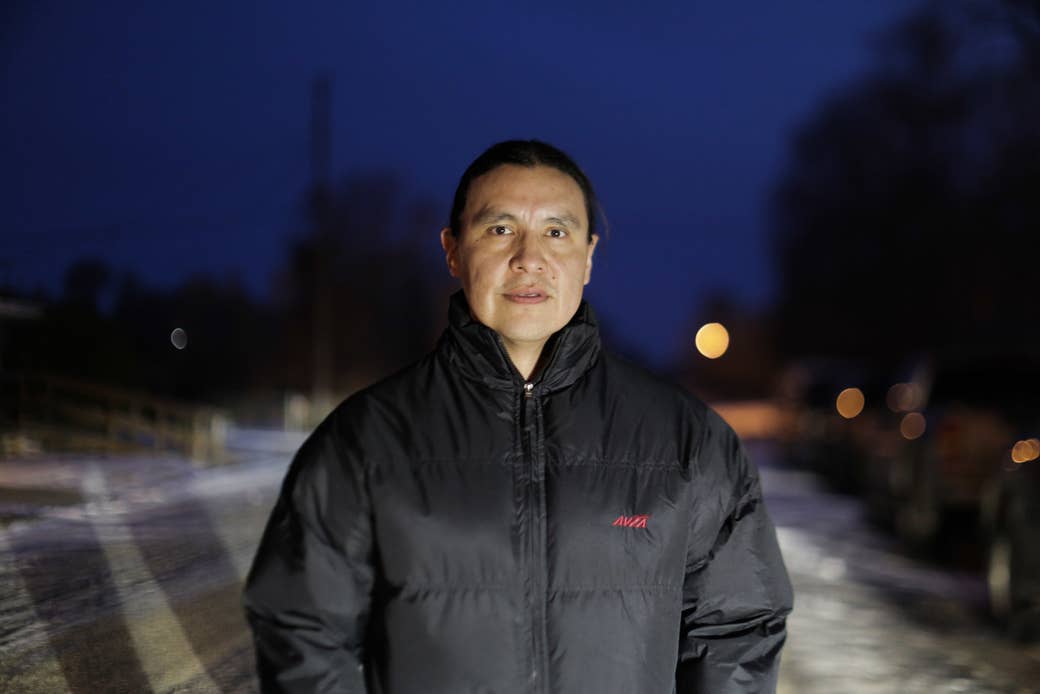
Chase Iron Eyes is an activist, politician, and lawyer. “We’re in this state where water has no value — many of these things we see as natural resources also are seen as having no intrinsic value,” he said. “What I’ve learned through the pipeline fight is that indigenous peoples, we have a role to play in helping this place transition from a colonized state to re-civilizing the world. What has been sold to us as civilization…it is not civilized.”
“Indigenous people have been fighting back in response to encroachment for a long time, but we need to take on an active role in imparting to the world what we know. … The original peoples of this land are still blessed to have a very real connection to the sacred, to the earth. But we’ve abstracted those ideas — we’ve suffered through a colonization of the spirit and the mind. But the pipeline fight has made the boundary line very visceral. Our water, our land, that is the true source of all value.”
“The pipeline fight changed our DNA.”
LaDonna Brave Bull Allard, Hunkpapa Lakota and Blackfoot
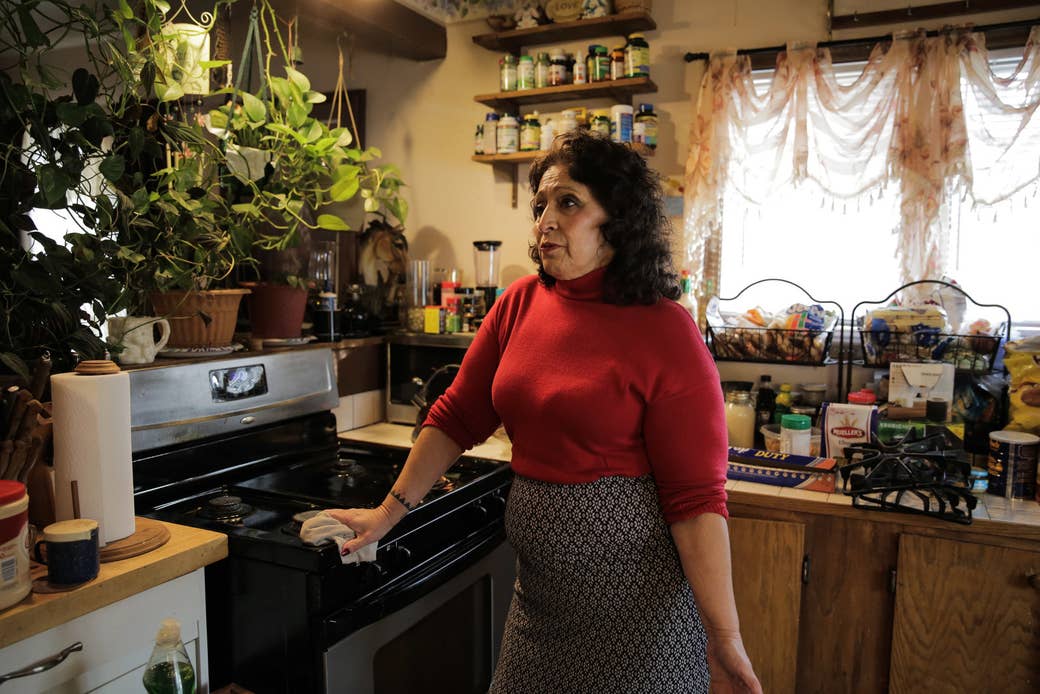
LaDonna Brave Bull Allard is a Standing Rock Lakota historian and activist, and was responsible for founding the first resistance camp in Cannon Ball to protest the Dakota Access Pipeline.
“You know, I never considered myself an activist,” she said. “I ran for a House seat, my father was a police officer, and I grew up with this idea of law. You go to school, you go to college, you work hard, all of these things we’re brought up with. So I never participated in activism. I wasn’t even quite sure what activism was.”
“That’s where I have difficulty with things. People say, ‘oh, the movement’s over.’ But it’s still my home. I’m not going anywhere. I’m still fighting. I’m only done when that pipeline is dug out of that ground. I’ve only just begun.”
“Now our system is built so that [polluters] pay a little fine, and everything is okay. And this is when I learned that the system is not just. American laws are not justice. My people have never had justice.”
“I have seen the cruelest forms of injustice here. On the other hand, I’ve seen in the camps how we’re supposed to live. I’ve seen the unity, the prayer, the ceremony, the compassion. I’ve seen where all the religious groups came together. I’ve seen where all the tribes came together. I’ve seen where all our non-Native allies came together. I think it’s something the world has never seen before.”
Alex Romero, Oglala Lakota
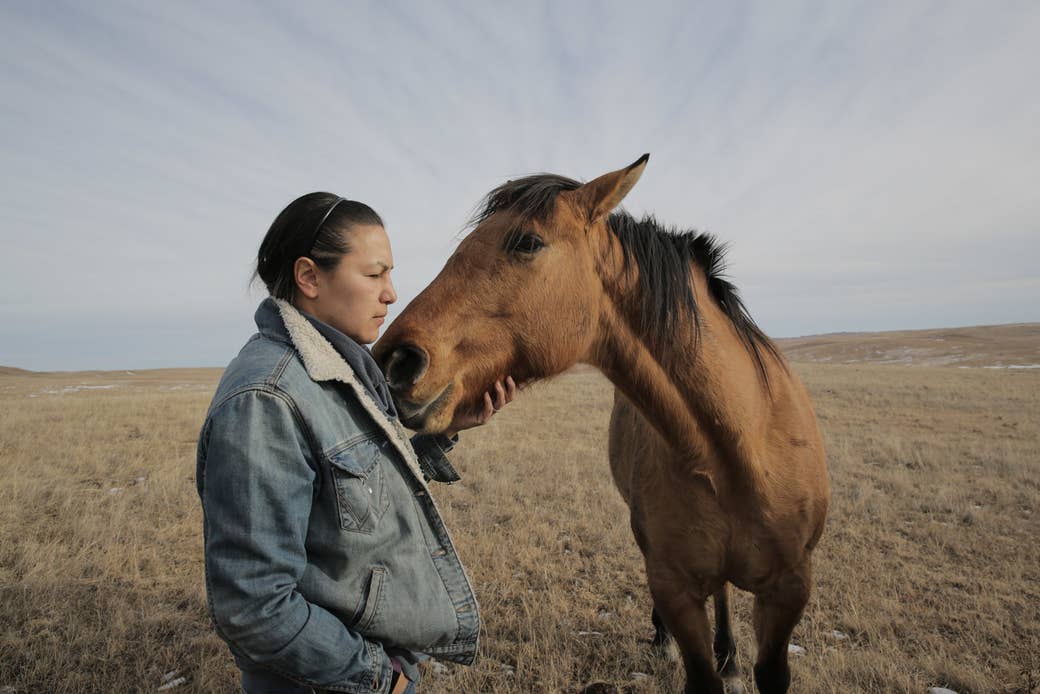
Alex Romero is a Lakota rider and rancher who was part of the peaceful charge against the Morton County Sheriff's Office in Standing Rock on the first day of construction of the Dakota Access Pipeline in August 2016. Romero, originally from Pine Ridge, is considered to be one of the first Lakota women to ride in that particular kind of ceremony.
“I thought it was really important not just for me, but for my children to be part of this movement,” she said. “Everybody came together — all Native nations from across the United States. They all came together as one whole gathering of indigenous people. That was important. And it was important to show the world we’re still here. We live in contemporary ways, but we still do carry our traditional ways as well.”
“We carry our Horse Nation practice through our family — and so it was important that my daughter be up there with me. That’s how we learn and pass on our ways. I think this showed her that there’s a deeper responsibility to not just be a contributing member of society but to uphold her ways and what she thinks is right.”
“It was important to remind everybody that there are greater things to fight for — the water, the earth. We live downstream of Standing Rock — if we don’t protect it and protect the land, we’re harming ourselves. The water and the land don’t have a voice — so we have to stand up and defend them.”
Greg Grey Cloud, Crow Creek Dakota

Greg Grey Cloud is a Lakota rider, therapist, and activist at his ranch on the Rosebud Reservation in South Dakota. He led a group of riders in a peaceful charge against the Morton County Sheriff's Office on the first day of construction of the Dakota Access Pipeline. He is the cofounder of Wica Agli, a nonprofit seeking to end domestic violence, and the comanager at Sinte Gleska Horse Ranch.
“When is the last time our people counted coup?” he said. “It hasn’t been since Crazy Horse was alive. It’s been 150 years now. Today’s the day. Today’s the day. Our people need to reconvene and reintroduce ourselves again. But this is a ceremony — it’s not meant to hurt anybody.”
Left, a no-trespassing sign near where the Standing Rock encampment had been outside of Cannon Ball, N.D. Right, a trailer designed by is parked near the home of Ladonna Brave Bull Allard.

Siera Begaye, Diné (Navajo Nation)
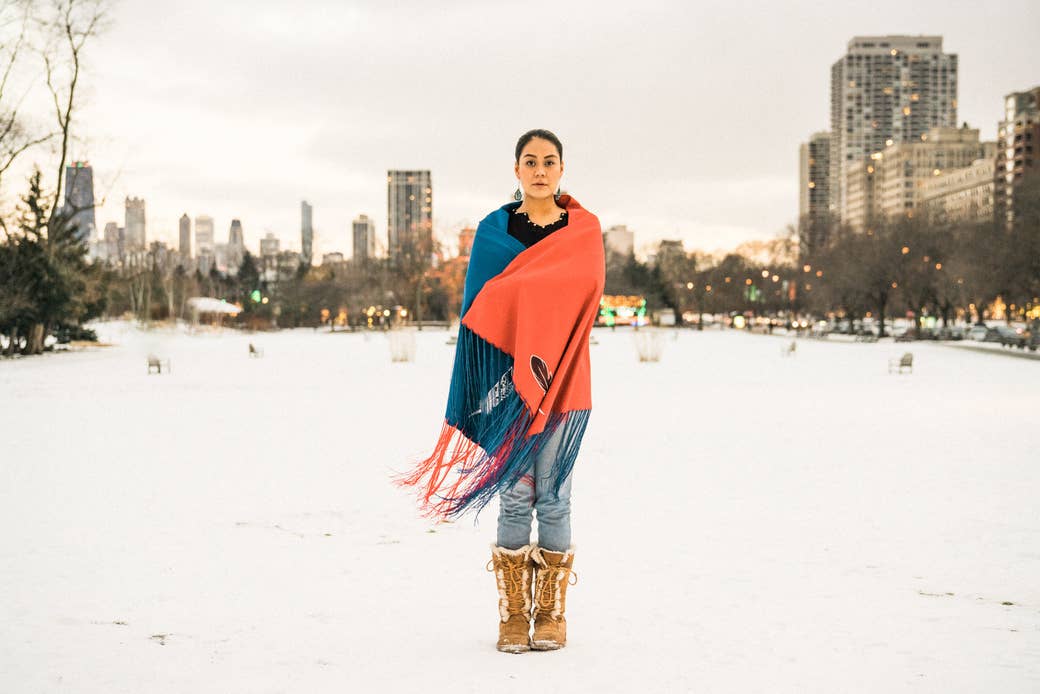
Siera Begaye’s full name, which she uses in traditional greetings, is:
Yá’át’ééh, Shí éí Siera Begaye yinishyé, Tabaaha nishłį́, Tsé Ńjíkiní bashishchiin, Bilagáana dashicheii, Tsi’naajinii dashinalí, Ákót’éego diné asdzáán nishłį́
“The first time I was given a platform to speak on sexual assault and abuse was at Standing Rock,” she said. “I was a part of a march called Kik Ta! Wake Up, a special project led by Rebecca Nagle and other Native women. It was another step of healing for me, my sisters, and our Nahasdzáán (Mother Earth). The parallels between the abuse that our Mother Earth goes through and the abuse our Native women go through is heartbreaking. She is our life-giver. She is who we turn to, to pray. Praying, surviving, being with all of our indigenous peoples is a step on our continuous journey to healing."
Naelyn Pike (Chiricahua Apache/San Carlos Apache Tribe)

“Before Standing Rock there were many battles that existed, like Oak Flat, Keystone XL Pipeline, the extraction on sacred land. After Standing Rock there will be so much more to fight for. Corporations and dirty politicians might have thought they won the battle, but they will not win the war. This is a spiritual war for not just the protection of our mother, the Earth, but our right to be a human being and to live freely.
“Through the tough times we grasped onto prayer and the traditions passed on to us as we protected the water and holy lands. As I felt the spirit of the earth and our ancestors behind me I couldn’t help but pray because I know this is a beginning to a major change in our lives and for the elements of the earth. It is the future we are preparing for because we aren’t only fighting against the Dakota Access Pipeline or Resolution Copper. We are fighting the invisible, and that is greed and power. In this time of chaos, it will be the youth who will give us energy to carry the fight and the wisdom given to us by our ancestors that will hold us to our roots. This is only the beginning.”
Matt Remle, Hunkpapa Lakota
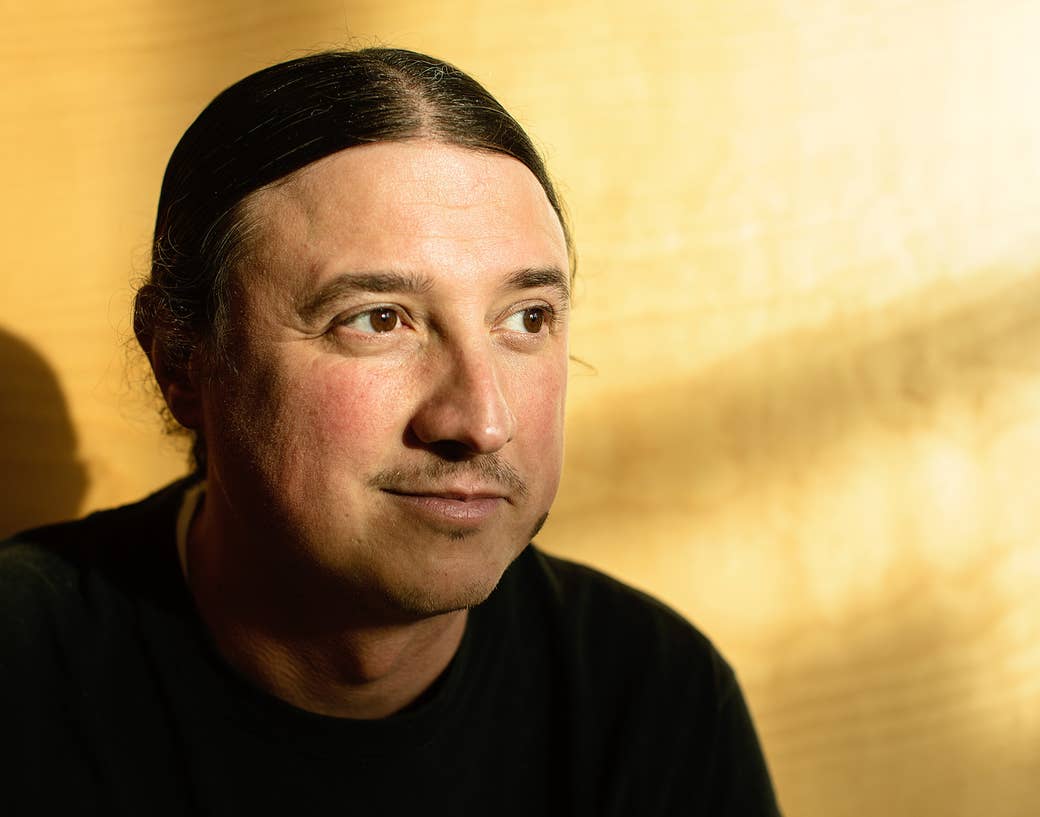
Matt Remle, who works for the Native American news site Last Real Indians, told BuzzFeed News it was his family who first told him about concerns that the pipeline would leak into the water at Standing Rock.
“In December 2015, way before Standing Rock started getting national attention, my relatives called me and said, ‘We’re worried about this coming through.’ The community was largely unaware of it — even on Standing Rock — because [pipeline officials] weren’t doing consultations or holding meetings like they were supposed to. One of my projects is writing and editing on Last Real Indians and so that’s where we started: educating people about what was happening. For a good nine months all the information was coming out of Last Real Indians. That was my early involvement.
“It switched when bulldozers went in and they were releasing the dogs on people. I thought, It’s a losing battle to stick with the moral and environmental argument. These corporations don’t care.
“See, we gotta think more like the banks. They’re capitalists and money is what they know and care about. So go to the sources and punish them. Say to them, ‘If you want to invest in companies like Energy Transfer Partners, then you’re going to lose billions.’ We reached out to Seattle City Council with this text message: ‘Would you think about pulling the employee payroll account with Wells Fargo?’ And [Councilwoman Kshama Sawant] said, ‘Sure, write it up. Let’s make it happen.’ It was $3 billion a year on a seven-year contract.
“We also added pieces to the legislation that would keep Seattle from jumping from Wells Fargo to Bank of America or JP Morgan Chase. So [we] crafted into the ordinance measures that would pressure banks to adopt socially responsible banking practices — a whole set of criteria.
“When a bank wants to bid on a city’s contract, they have to answer questions like Are you invested in fossil fuels? Private prisons? Immigrant detention centers? Predatory lending practices against communities of color? And how they answer those questions affects how their bids are scored. It gives them a choice between profiting from city contracts or pipelines, for instance.
“Following this there was a second resolution going after the pipelines Trudeau approved in Canada. We passed a piece that says that if any bank gives money to tar sands projects they will automatically be prohibited from bidding on Seattle contracts. You give money to Keystone XL? Then you’re out of luck in Seattle.”
Nikkita Oliver, non-Native

Nikkita Oliver is an attorney and former mayoral candidate from Seattle.
“Standing Rock grew my current work. I’ve always been on this trajectory of seeing black folks and black communities aligned with Native folks and doing work that brings us closer to each other.
“For me, I’ve done frontline resistance and gone head on with police in Seattle, and to go out to Standing Rock and see that in an utterly lawless fashion…lawless meaning all these people who are supposed to be representing the legal system are literally going against every single thing that the law says. I just think that it really pushed me further in my conviction that we resist and build our alternative system, so we’re not always in the position of having to push back against.
“So from Standing Rock, I came back to Seattle to build with folks like Rachel Heaton and Matt Remle around divestment and now this idea of an alternative banking system. What’s dope about the evolution of divestment into public banking [is that] public banks have a charter and mission and however you write them dictates what the bank does. So say it was to serve vulnerable communities of Seattle — that’s what all the banks’ earned income would have to go toward.
“We just need to be building our own alternative systems — economic, health, housing — that serve and honor the way we are and who we want to be.
“We can spend our whole lives fighting for this system to break down and then at the end of it not leaving anything different or better for our children. When it’s my time to move on I want to have left something better for them to engage in and be sustained by. So divestment and the public banking idea and the many other things we are talking about give me hope that we can move something better…as long as we can keep the polar ice caps from melting.”
Chelsey Luger, Lakota and Anishinaabe

Chelsey Luger and her partner, Thosh Collins, started an initiative called Well For Culture, “a physical manifestation of the hybridized indigenous wellness movement,” according to its website. Together, Luger and Collins learn about the ancestral knowledge of the land and share that wisdom with communities across Native country.
“When the pipeline stuff started going down, I was living on the other side of North Dakota. I drove there one weekend to report on the issue because the tribal government at the time asked me to come down for their first press day — they needed to spread awareness and had been having a difficult time getting press. I was one of two reporters who showed up. This was about a month before the camps got started. I never would have imagined that the movement exploded in the way that it did. It still blows my mind.
“I traveled there a few times throughout the year. I played two roles: supporter of the movement and journalist. I tried to keep the two separate. I did some objective, straight-up news reporting, but I also wrote a lot of op-eds because I found it impossible to remove my voice entirely from my work.
“My experience was very complex. I loved and appreciated that so many people from all over the world suddenly became interested in and passionate about supporting the community, particularly in its early stages.
“Toward the end, however, it started to get weird. I saw a lot of conflict, a lot of egos, a lot of corruption, a lot of microcolonialism (white people taking over the camp), and a lot of trauma playing out at the campsite. In addition to these dynamics, it was heartbreaking to see just how terribly Native people were being treated by local media and law enforcement. It was everything I had seen growing up in North Dakota exacerbated to an extreme level. That was really sad.
“[Standing Rock] sparked the beginning of what I believe will be a new era of activism and community empowerment that is driven by and led by indigenous people. Just as I did before #NoDAPL, I continue to seek and report on stories from Native communities that deserve attention but go under the radar. It’s my job, but it’s also my passion. Standing Rock influenced the current political and political-activist climates by reminding all progressives that the indigenous voice should be included and taken into consideration more often.”
The Lower Brule Reservation in South Dakota sits on the west bank of Missouri River. The population of the reservation, which is home to the Lower Brule Lakota, is less than 1,000.
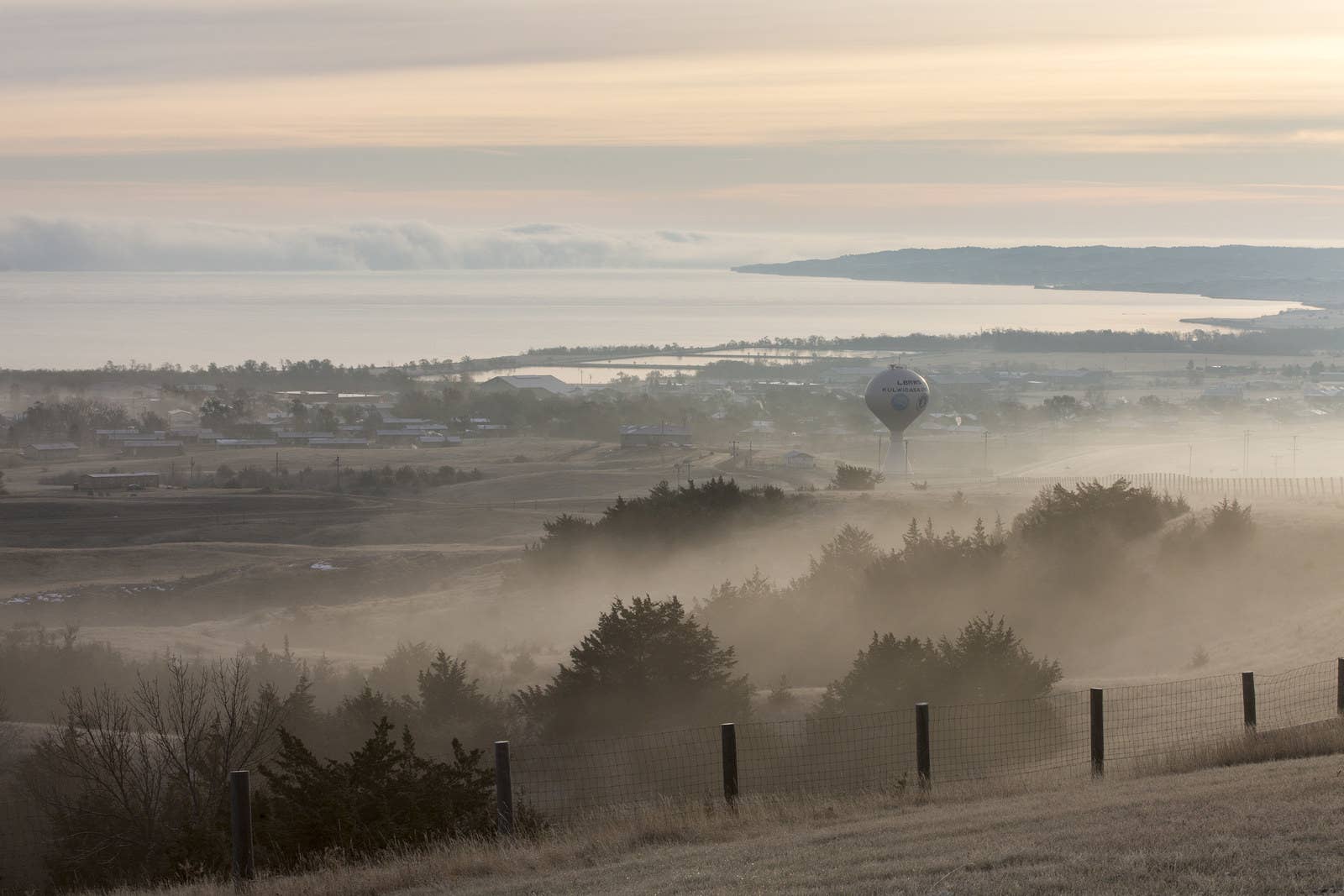
Sarain Carson-Fox, Anishinabe
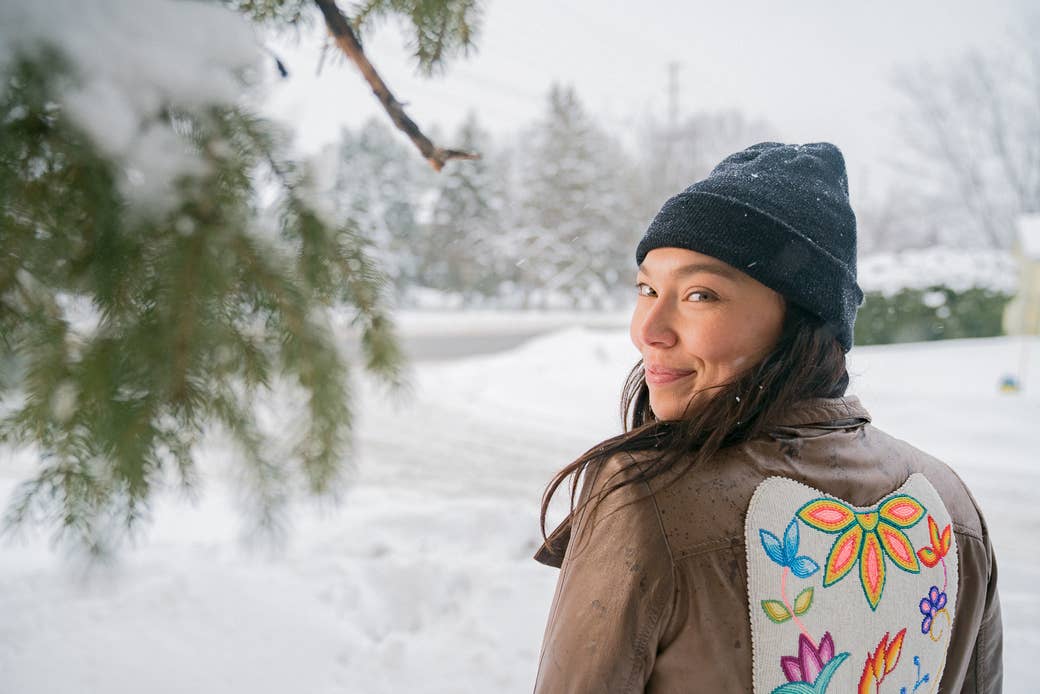
Sarain Carson-Fox is a choreographer, model, and actor based in Toronto. She traveled to Standing Rock out of personal interest, but also as the host of Rise, a show on Viceland that traveled to indigenous communities across the Americas to meet people protecting their homelands and rising up against colonization.
“I arrived on the banks of the Cannonball River with my team from Rise/Viceland in April 2016. Before the media storm, before the dogs and water cannons. When just a small group of protectors had gathered to stand for the water, the land, and the ancestors who rested there,” she said. “I was there to document their fight. To learn of the struggle and the plan to stop the Dakota Access Pipeline.
“My experience at Standing Rock was one of great learning and gratitude. As I write this response, my heart is heavy, having just received the news of the passing of Miles Allard, Sun Dance leader and husband to Sacred Stone founder LaDonna Brave Bull Allard. They were my elders at Standing Rock. The fight began with them for me. No one would have ended up at Standing Rock if it had not been for LaDonna and Miles opening up their hearts and their land for protectors to come and stand.
“One of my happiest memories from Standing Rock was being invited to a buffalo hunt, where I got to sing the life from the buffalo and be a part of an incredibly powerful ceremony. The youth all helped to process the buffalo and Miles Allard shared teachings as we all sang songs and laughter filled the air. On a day like that you could never imagine that in just a few short months, thousands would flood into the community and Standing Rock would make history. It’s hard to talk about the happiest memories, because to be honest, after the dogs, the bulldozers, and the slow infiltration of distrust and militarization, Standing Rock — the camps — became a lot about survival and less about thriving on the land, together as a community.
“In retrospect, I think Standing Rock was the culmination of decades of restless indigenous people. ... I look back at the Idle No More movement in Canada and see the early signs of an organized response to assimilation, genocide, and injustice in this day and age. You can only push people into a corner for so long until they fight their way back to freedom and self-determination.
“There is no denying that Standing Rock changed the world. For a few short months, in 2016 the world stopped and heard the indigenous voice, and that song is still echoing today.”
Mereya Lachel Goetzinger-Blanco, Apache-European
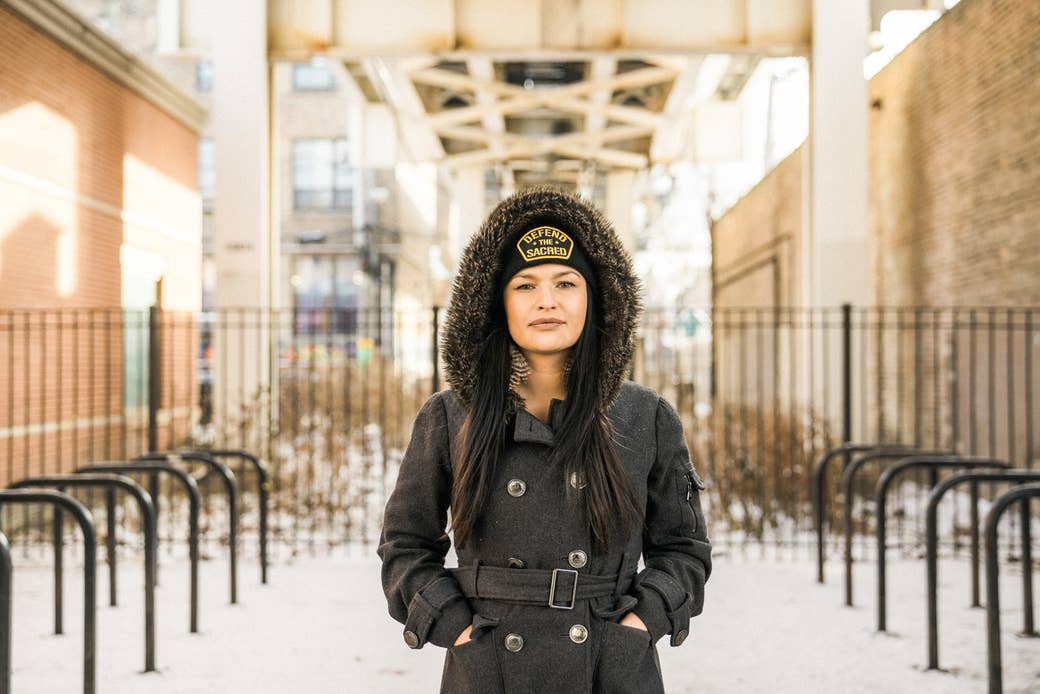
“Growing up half-Native and half-white, I spent my entire life questioning who I am. Among all the love there was a lot of pain and suffering. Oceti Sakowin was a camp for the broken, on their journey of healing and creating. Every night we would gather around the fire and sing. This was the first time I was around the fire and drums. I cried. All my walls came crashing down when I looked into the fire. I stopped denying who I was and what my purpose was. Standing Rock changed the way I viewed myself. It broke down the social barriers I created for myself.”
Adrien “AJ” Pochel, Cree-Lakota
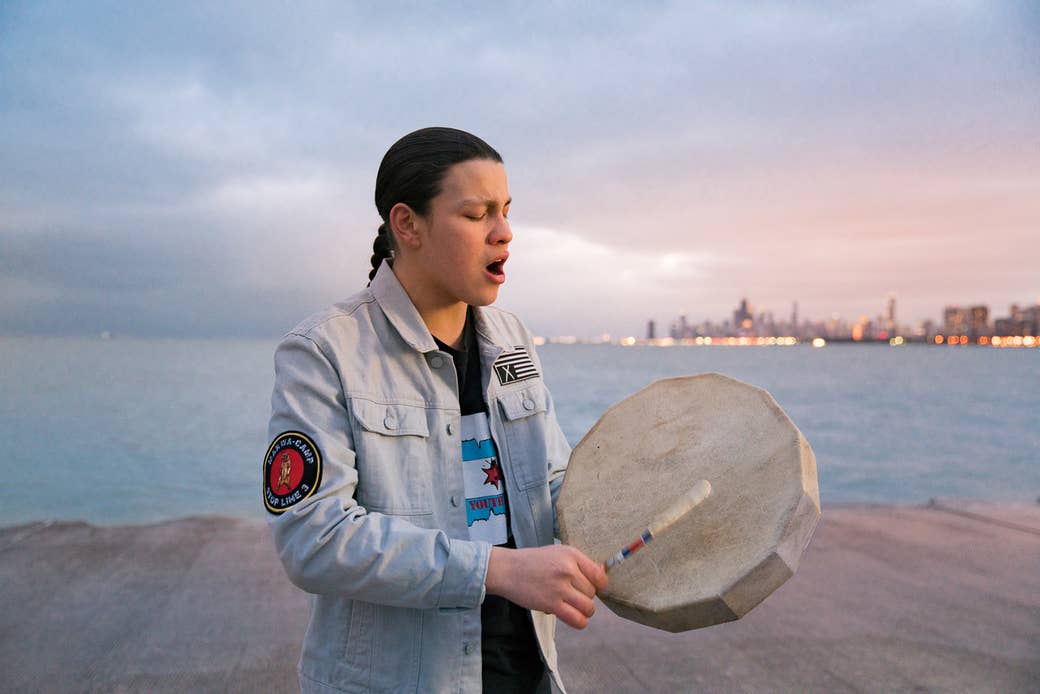
Adrien "AJ" Pochel lives in Chicago and is an ambassador for the Chi-Nations Youth Council, a diverse group of young people and adults, with a mission to create a supportive, open environment for Native youth. He traveled to Standing Rock with his aunties in summer 2016. A singer and drummer, he came back to Chicago with songs that he had learned at camp. He sang one of the songs honoring water by the Chicago River during a walk that was held to commemorate the new location of the American Indian Center.
“The visibility of Native people increased during the occupation at Standing Rock. There was a surge of support and allies. Nations came together in prayer and it was one of the best experiences of my life. Standing Rock has shown a lot of us that there is a better way to live. As an individual it has shown me that our people need our lands to thrive and it has given me more motivation to learn about my plant relatives and fight for my ancestral homelands that are occupied Chicago.
“We’re basically doing the same things we were doing before camp, reclaiming our Native space here in the city of so-called Chicago. Chicago has been Native land for centuries. Our plants are still breaking through the concrete. They grow in the alleys, in the parks, in the cracks in the sidewalk.
“Being in the city, we’re always on the front lines of mascot imagery, of gentrification. I felt the need to know and introduce myself with my plant relatives, my medicines that grow right here, right in front of my house and in the alleys. A lot of times people feel that we have lost touch with our land and our culture, but this is false. There are still Native plants and Native species that grow here and they will always grow here. Again, this is Native soil. I felt the need to learn about my plant relatives so that I’m not so alone in the city.”
Susana Sandoval, Purepecha

“We have never lived in a more dangerous time but we also have the opportunity for us to build. This in an era in which women are going to have more leadership opportunities and Standing Rock was an example of that. For many of us it wasn’t a beginning but rather a continuation. It was a moment in history that allowed us to come together internationally and reflect upon our humanity.”
Joseph White Eyes, Blackfoot Lakota (pictured with Danny Grassrope)
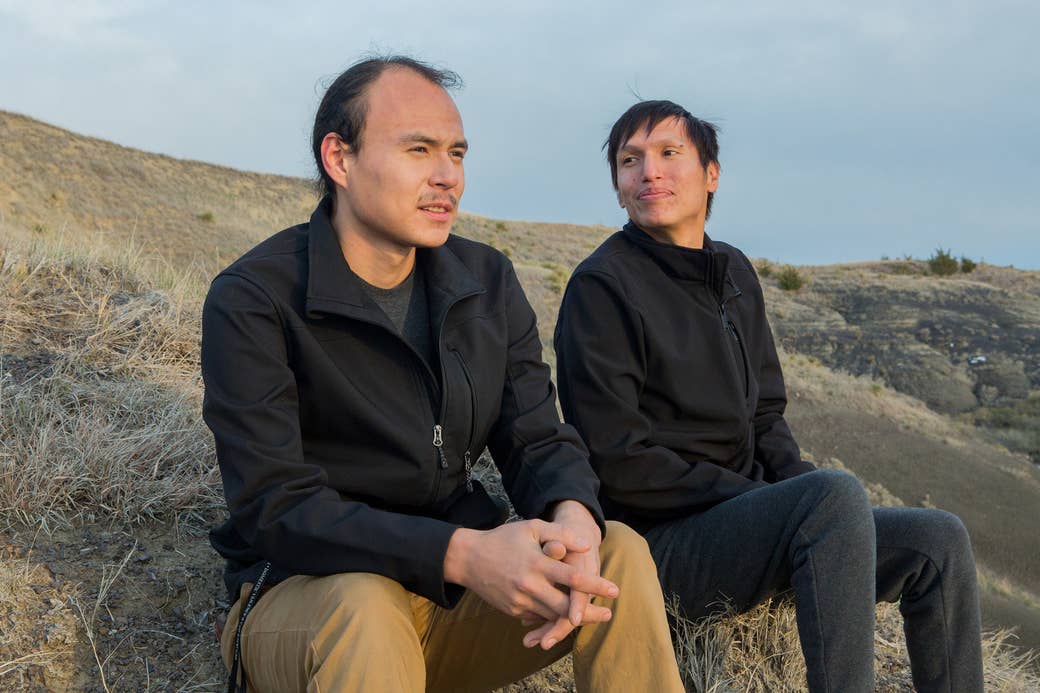
Joseph White Eyes was among the first to camp at the Standing Rock site in April 2016, having been involved in pipeline protests against Keystone prior to that. Danny Grassrope joined the camp as a youth runner, participating in runs to promote awareness, and founded a youth council at the site. Both participated in runs around the country and trips to Washington, DC, to meet with the Army Corps of Engineers, the Department of the Interior, and the White House to discuss the treaties being violated by the pipeline.
“It made me see that a little group can kick off something huge,” White Eyes said. “After we ended up going, being there for almost a whole year, I quit my job, quit school. Afterward it was like, what now?
“I feel like it didn't create a path for me, it kept a path for me. I started walking this path back in 2010 and Standing Rock just solidified it for me.”
Danny Grassrope, Kul Wicasa Lakota
Danny Grassrope stands on a bluff overlooking the Missouri River on the Lower Brule Reservation in South Dakota.
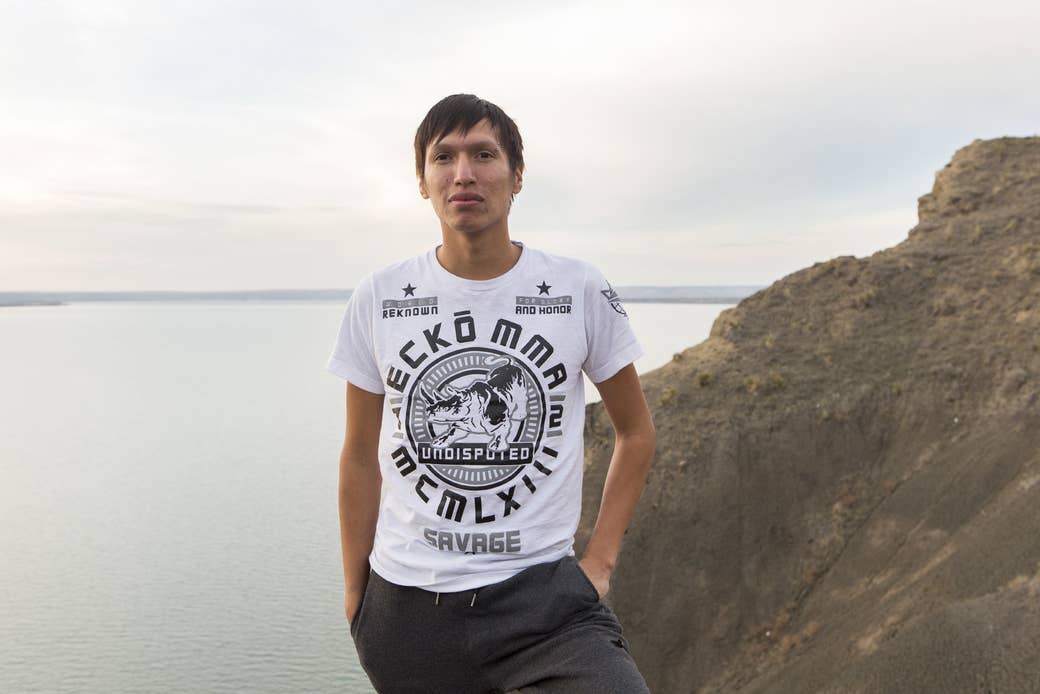
Danny Grassrope grew up in Lower Brule and returned there with his partner, Joseph White Eyes, after the #NoDAPL camps in Standing Rock were evicted in early 2017. Grassrope and White Eyes are now working as activists in Lower Brule and beyond.
“I started on the run to Chamberlain, and planned to go to work the next day. I happened to pack extra clothes and ended up running to Omaha, Nebraska [in support of Standing Rock]. On that run, that is where I found myself. That was the first that that I didn't think about drinking. I found that peace with myself that I didn't need alcohol. It wasn't the camp that turned my life around — it was the runs.”
In working with young people at Standing Rock, Grassrope said he learned a lot about cooperation.
“In order for us to be unified, to set aside our differences, that has to come from within. There is a lot of healing, a lot of forgiving that we have to teach. We have to teach that it's okay that we have different ideas and different solutions. Let's just tie them together and work out a plan. There are all these solutions that we have that can make this movement happen, to help protect ourselves, help protect our world. Everyone is indigenous to the world and we have to live off natural resources that come from the earth.”
Left, pipes allocated for Line 3 at a holding site in Carlton, Minn. Right, a sign promoting the fight against Line 3 at Makwa Initiative in northern Minn.

Ta'Sina Sapa Win, Itazipco, Mnicoujou, Hunkpapa Lakota
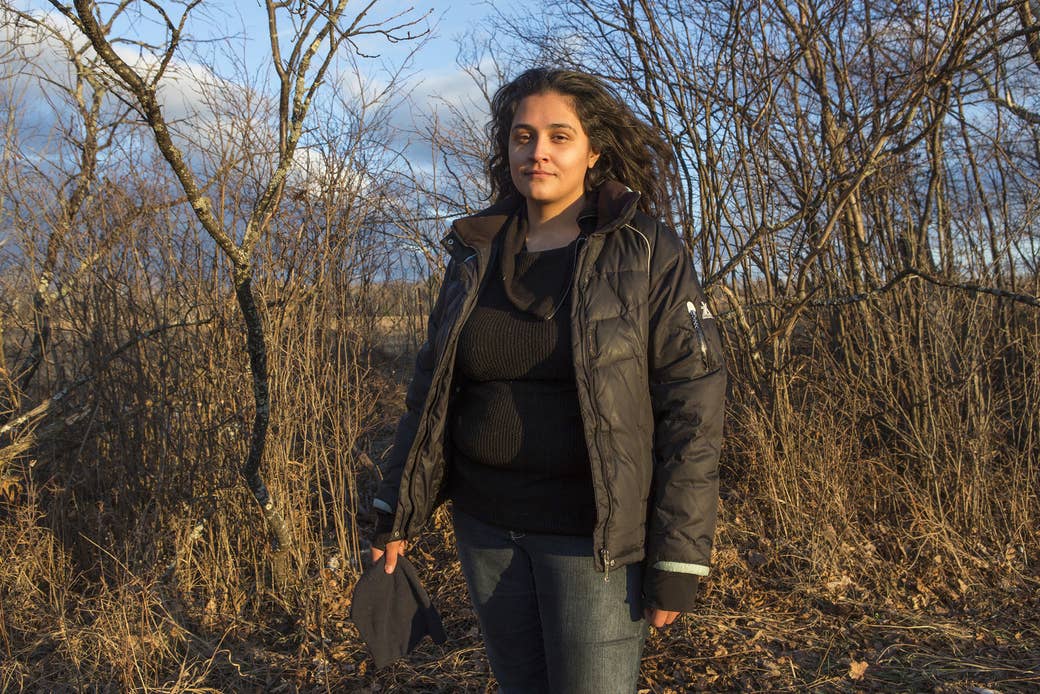
Ta'Sina Sapa Win has been an activist since she was 15 years old. She was at the front lines of the #NoDAPL movement in Standing Rock, where she was one of the Water Protectors bitten by a private security force dog. Sapa Win is now living at the Makwa Initiative on the outskirts of the Fond du Lac Reservation in northern Minnesota, working to halt the construction of the Line 3 pipeline by Enbridge.
“That was where my whole life changed,” said Sapa Win. “Every step was like the beat of a drum. It imprinted in me, I was flying, it was like I was being carried. I’m not a runner and I ran for miles; my ancestors were my legs. [Standing Rock] made me feel like I had a purpose and that was to be a protector. We’re not extremists, we’re just terrified for our future and that one day there won’t be any clean water.”
Alex Good Cane Milk, Yankton Ihanktonwan Dakota
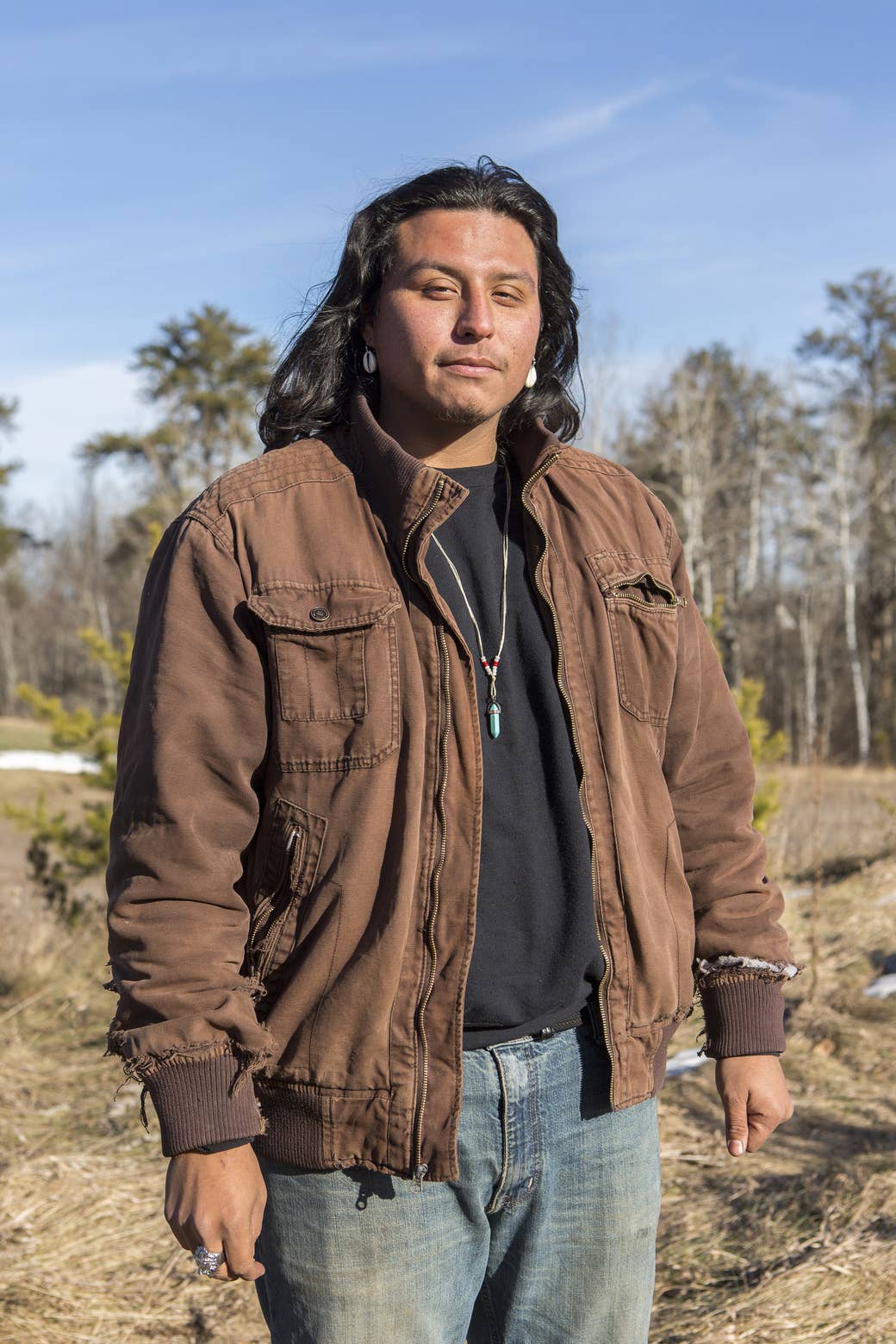
Alex Good Cane Milk also goes by the camp name Topa. He's living at the Makwa Initiative on the outskirts of the Fond du Lac Reservation in northern Minnesota while working to halt the construction of the Line 3 pipeline by Enbridge. Topa was at the front lines of the Standing Rock #NoDAPL movement in North Dakota between 2016 and 2017.
Genova Ariel, Mexica
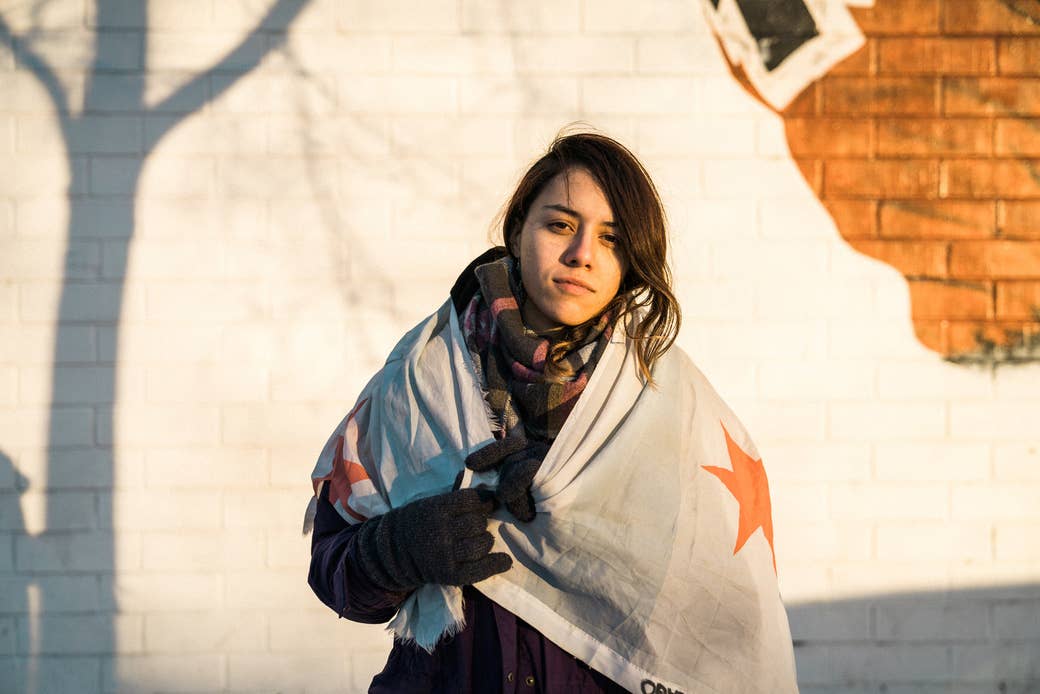
“Anishinaabe sisters brought me into the awareness that, in order to protect our water of life from rapist pipelines, we must focus our resources in the courts toward blatantly broken treaty laws. According to Article VI of the Constitution: ‘All treaties made, or which shall be made, under the authority of the United States, shall be the supreme law of the land; and the judges in every state shall be bound thereby, anything in the Constitution or laws of any State to the contrary notwithstanding.’ Therefore it is unconstitutional for anything non–Native American to be on Native American treaty lands.
“A win here will set a strong foundation for BLM, gentrification, and anti-deportation struggles in America. This Chicago flag flew proud through storms at Standing Rock; we need to do the same. Chicago-Mexica youth represented strong at the front lines and continue to support the movement at the No Line 3 Makwa Initiative in Minnesota, against uranium mining at the Wind Caves in South Dakota, and the Keystone XL pipeline in ND.”
Tokata Iron Eyes, Hunkpapa Lakota
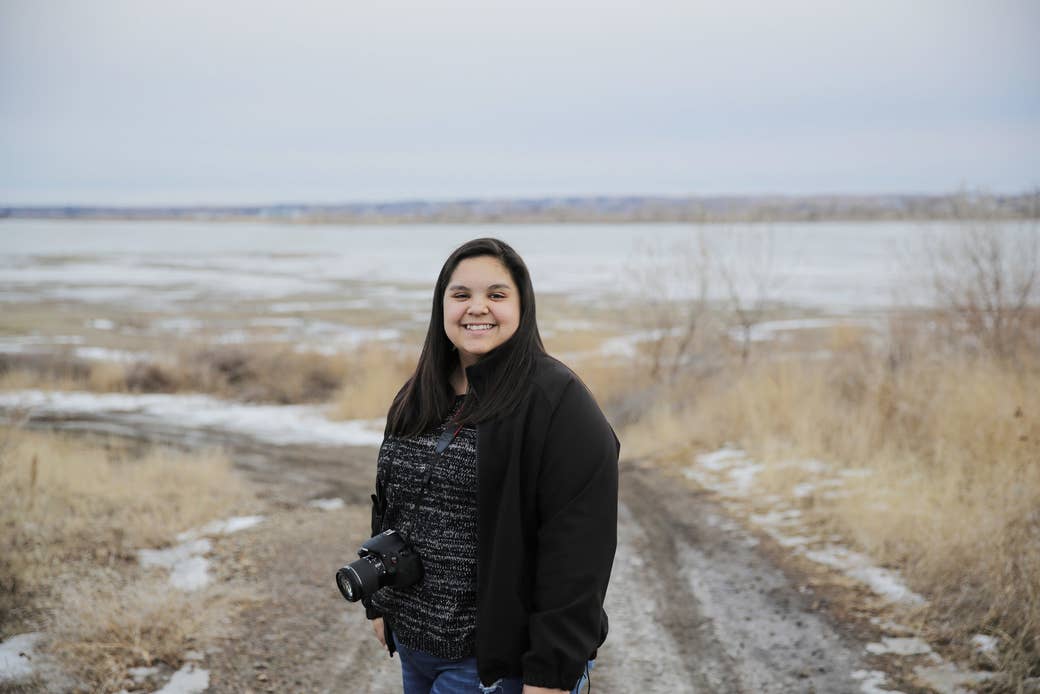
Tokata Iron Eyes, 14, is a tribal member and young activist from Standing Rock who has been outspoken about the pipeline and the need for environmental protection in her community.
“My entire family is from here. My grandmas lived here. Their grandmas lived here. And one day, I want to bring my grandkids here. We’re all deeply connected to this land and the resources — and we have to take care of them. I’ll be doing this work for the rest of my life. I never thought people would care so much — but this has turned into something huge.”
Dallas Goldtooth, Mdewakanton Dakota & Dińe
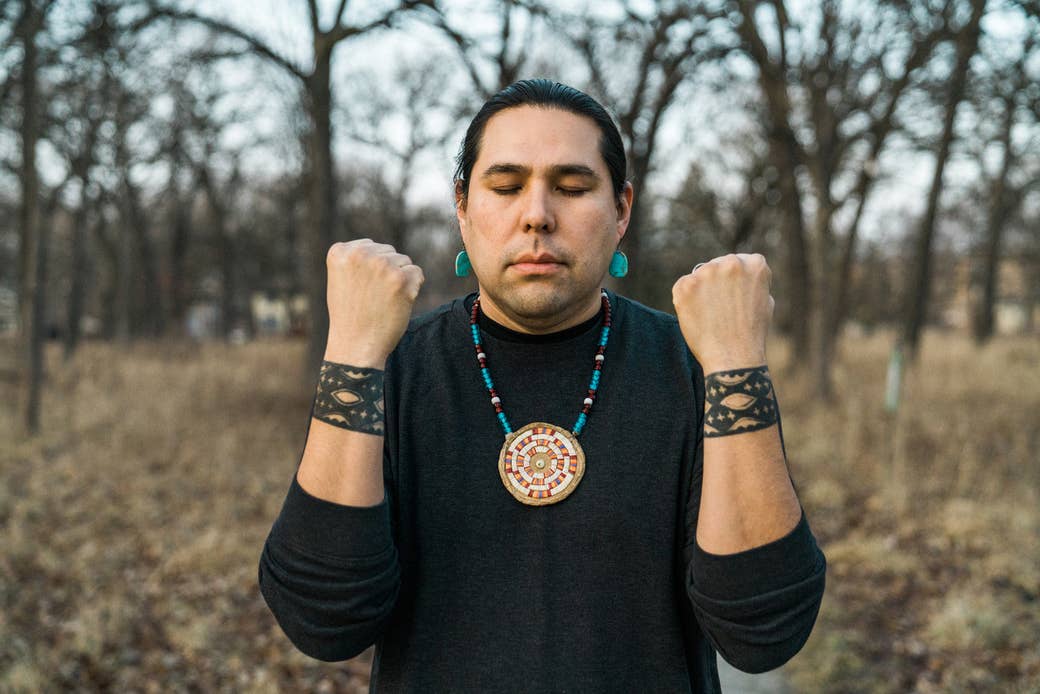
“Standing Rock is not only a milestone on the road toward indigenous rights, recognition, and self-determination, it is a beacon for all our collective struggles in this country that are engaging in resistance. It inspired us to stand up to protect our communities, to not falter in the face of militarized police brutality, to reject the status quo of white supremacy, and to continue to build this movement of movements.”
Joseph White Eyes and Danny Grassrope stand on a bluff overlooking the Missouri River on the Lower Brule Reservation in South Dakota on Nov. 8, 2017. Grassrope grew up in Lower Brule and returned there with White Eyes after the #NoDAPL camps in Standing Rock were evicted in early 2017. Grassrope and White Eyes are now working as environmental activists in Lower Brule and beyond.

UPDATE: this post was updated to reflect the exact tribal affiliations of Chase Iron Eyes, Tokata Iron Eyes, Ladonna Brave Bull Allard, Greg Coleman, and Alex Romero.
February 28, 2018, at 8:14 p.m.
3 WAYS TO SHOW YOUR SUPPORT
- Log in to post comments
















